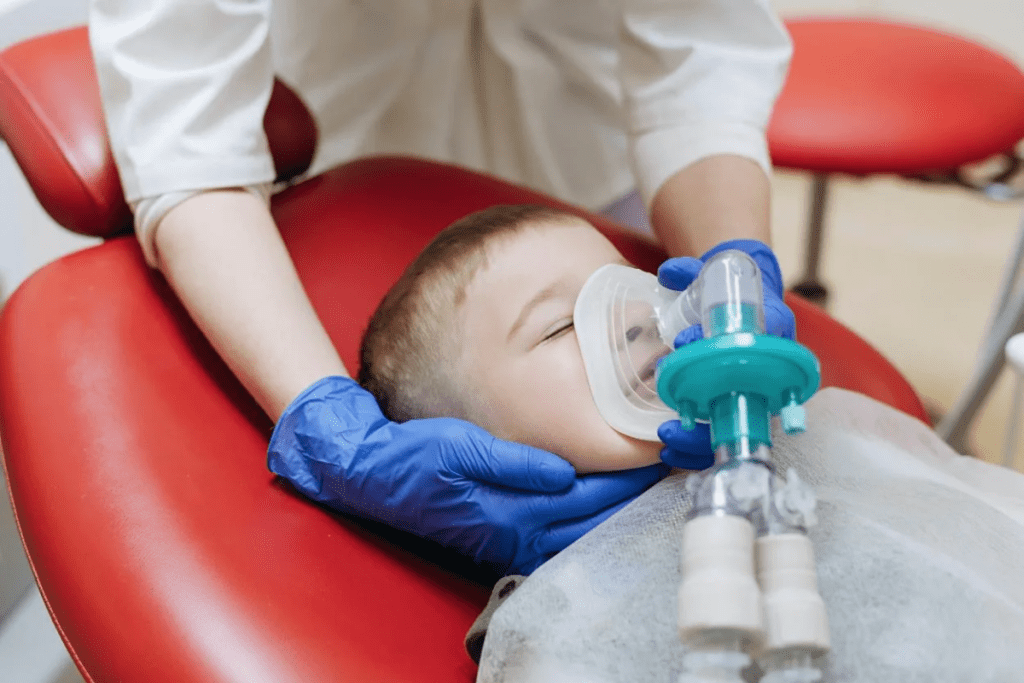Last Updated on November 14, 2025 by
The history of anesthesia in medicine is fascinating. Its use in caring for babies has been especially important. The question of when they start using infant anesthesia on babies is linked to how we understand pain in infants.
In the late 19th and early 20th centuries, big changes happened in anesthetic techniques. Pioneers in the field set the stage for today’s pediatric anesthesia. We look at this time to see how care for babies has improved.

The first use of anesthesia is a key moment. Knowing when it started helps us understand today’s practices. We examine early cases to learn more about this important part of medical history.
The 1890s were a big change for pediatric anesthesia. The first time anesthesia was used on kids was then. This was the start of a new way to care for kids during surgery.
The start of anesthesia for infants was a big step forward in children’s care. At first, doctors used adult methods on kids, with mixed results. But as they learned more, they got better at it, helping kids more.
One of the first times anesthesia was used on kids was in the late 1800s. Pediatric anesthesia grew fast as doctors shared their experiences with general anesthesia in infants.
In 1898, Dr. August Bier made a big leap with spinal anesthesia. His new method opened up more surgeries for babies. It also helped pave the way for more progress in infants and anesthesia.
Dr. Bier’s spinal anesthesia changed how kids’ surgeries were done. It made pain control better, helping kids more during surgery.
Dr. Bier’s work led to more research and better care for kids in surgery. The early 1900s saw big improvements in how kids were treated during surgery. This set the stage for today’s standards.

From the 1920s to the 1950s, big changes happened in how we use anesthesia for babies. These changes made it safer and more effective for them.
One key improvement was the development of miniaturized anesthesia equipment. Anesthesiologists started using smaller tools made for babies. This made it easier to control the amount of anesthesia given, lowering risks.
Smaller machines and tools have changed pediatric anesthesia a lot. They let doctors give general anesthesia to infants safely. This opened up more complex surgeries for them.
For example, new endotracheal tubes and ventilators helped manage the baby’s airways better. This was especially important for newborns undergoing surgery, improving their chances of doing well.

As technology got better, so did the surgeries done on babies. The 1920s to 1950s saw more complex surgeries under general anesthesia. This included fixing birth defects.
Doctors and anesthesiologists worked better together because of these advances. This teamwork led to fewer deaths in infant surgeries. It marked a big change in pediatric surgery.
By the 1950s, anesthesia had become a standard part of baby surgery. This was a big change from before. It set the stage for more progress in pediatric anesthesia later.
The question of “when did anesthesia become common” in infant care is answered by looking at these decades. It was then that anesthesia went from being risky to safe and common in pediatric surgery.
For a long time, doctors thought babies didn’t feel pain. This was because they didn’t understand how babies feel pain. This mistake led to babies having surgeries, like circumcision, without enough pain relief.
Doctors used to think babies didn’t feel pain like adults do. They thought babies’ brains weren’t developed enough. This led to no clear plan for managing babies’ pain.
We now know babies can feel pain. It’s our job to help manage their pain. This change has made us better at caring for babies during surgeries.
Not helping babies with pain had big effects. Studies show that babies who don’t get pain relief can have problems later. This includes being more sensitive to pain as they grow up.
Now, we know managing pain in babies is key. It helps them feel better now and in the future. We make sure babies get the right pain relief for surgeries, like circumcision.
Research in the late 20th century changed how we understand and treat infant anesthesia. This time saw big steps forward, thanks to new knowledge about how newborns feel pain.
In the 1980s and 1990s, studies showed newborns react to pain in big ways. They found that babies in surgery without the right anesthesia felt stress and pain. This could harm them in the long run. A key study found that even newborns a few days old showed pain signs during surgery.
This discovery was a big deal. It made doctors rethink how they manage pain in babies. It showed the need for better ways to help infants feel less pain during medical procedures.
Understanding newborn pain led to big changes in medical rules. Doctors started using better anesthesia and pain relief for baby surgeries. New rules for taking care of kids under anesthesia were made.
Hospitals got better at managing pain in babies. They used new anesthesia methods and formed special teams for kids’ anesthesia.
By the mid-1990s, the changes were clear in how kids were treated in surgery. More than 95% of big surgeries in babies used full anesthesia. This was a big jump from before. It showed how important it is to manage pain well in babies.
The changes in how we treat infant anesthesia in the 1980s and 1990s were huge. They made care for babies in surgery better. They also helped us understand pain management better for this special group.
Looking back, we see big steps forward in infant anesthesia since the late 19th century. The start of anesthesia marked a new chapter in managing pain. Its use in babies has grown a lot.
From the early days of pediatric anesthesia to today’s advanced practices, we’ve made great strides. We’ve learned more about managing pain in infants. This journey has helped us understand when and how to use anesthesia on babies.
Looking ahead, more research and new ideas are key for better pediatric anesthesia care. By using what we’ve learned, we can make anesthesia safer and more effective for infants. This will help improve care for young patients.
Doctors began using anesthesia on babies in the late 19th and early 20th centuries. The first cases were documented during this time.
Dr. August Bier was a key figure in pediatric anesthesia. He made significant contributions, especially with spinal anesthesia in children, in 1898.
New technology, like miniaturized equipment, greatly helped with anesthesia for infants. It made it safer for smaller patients.
For a long time, doctors thought babies didn’t feel pain as adults do. This led to poor pain management for them.
The 1980s and 1990s were key years. Research showed that newborns do feel pain, changing how doctors manage their pain.
Yes, anesthesia is used for circumcision to help with pain. This shows how much we’ve learned about managing infant pain.
By the mid-1990s, over 95% of major surgeries on infants used full anesthesia. This was a big change in how medicine treats infants.
Anesthesia was first introduced in the 19th century. Since then, many techniques have been developed and improved.
Subscribe to our e-newsletter to stay informed about the latest innovations in the world of health and exclusive offers!